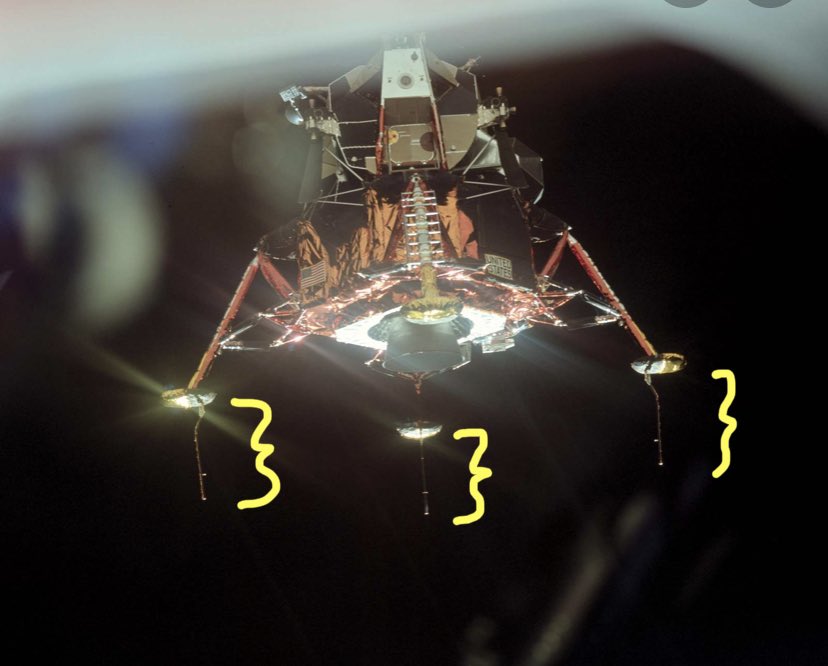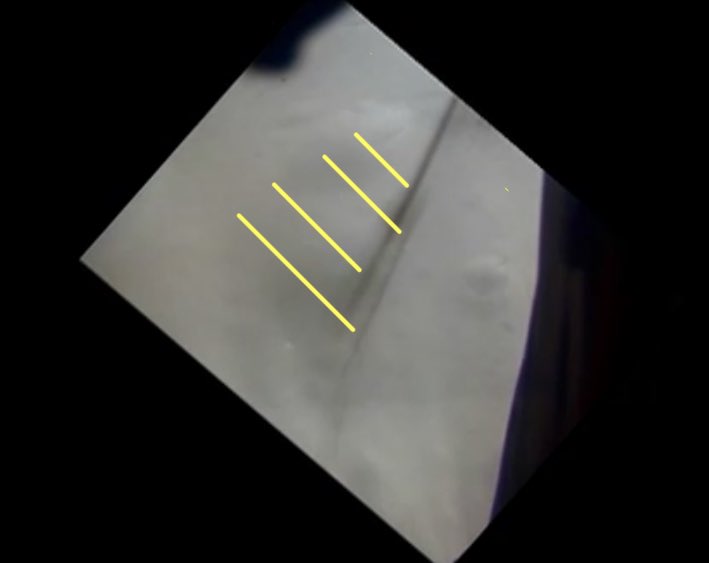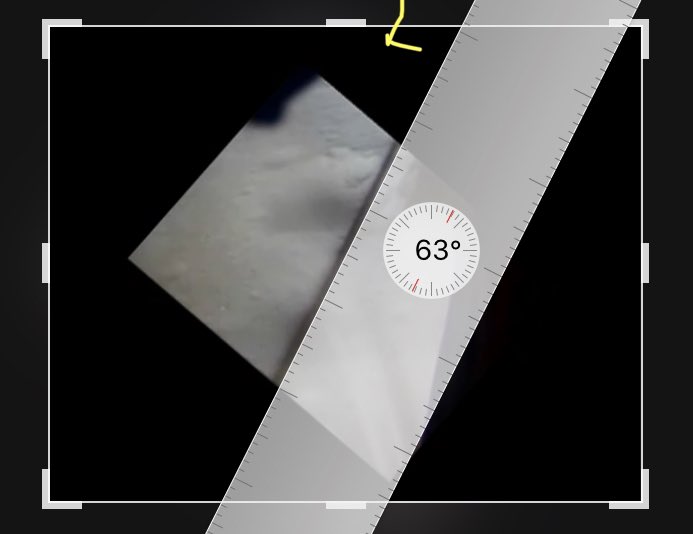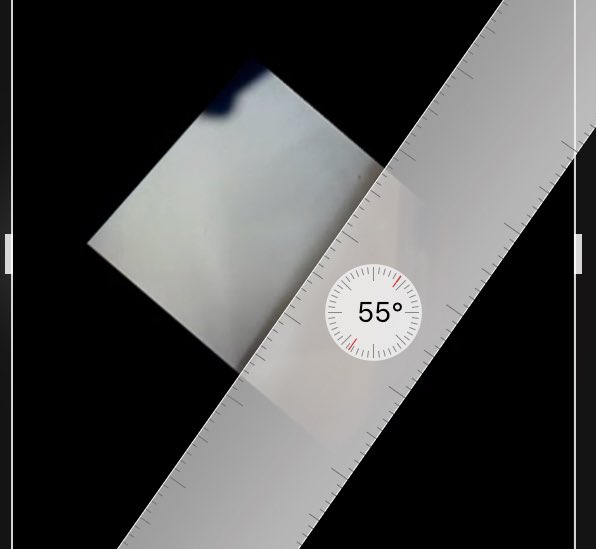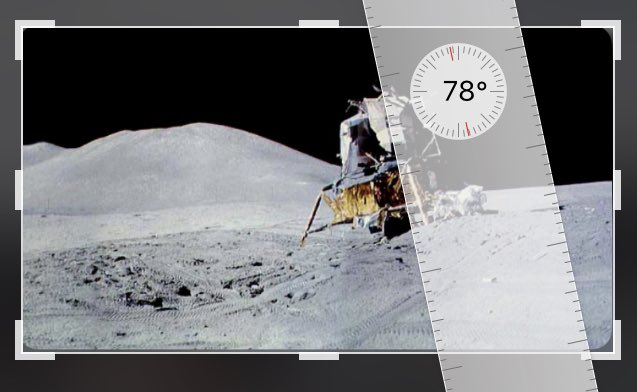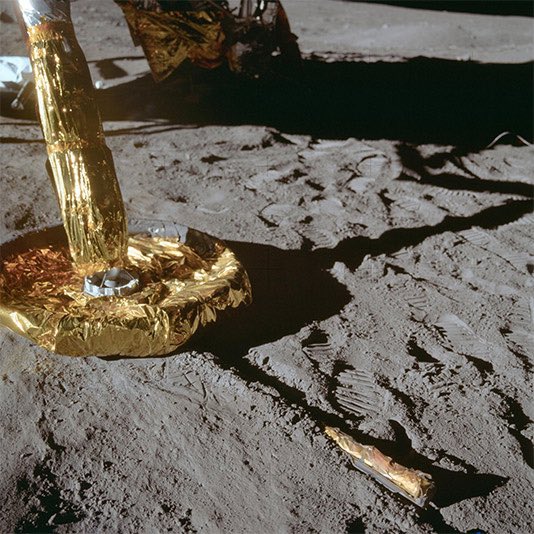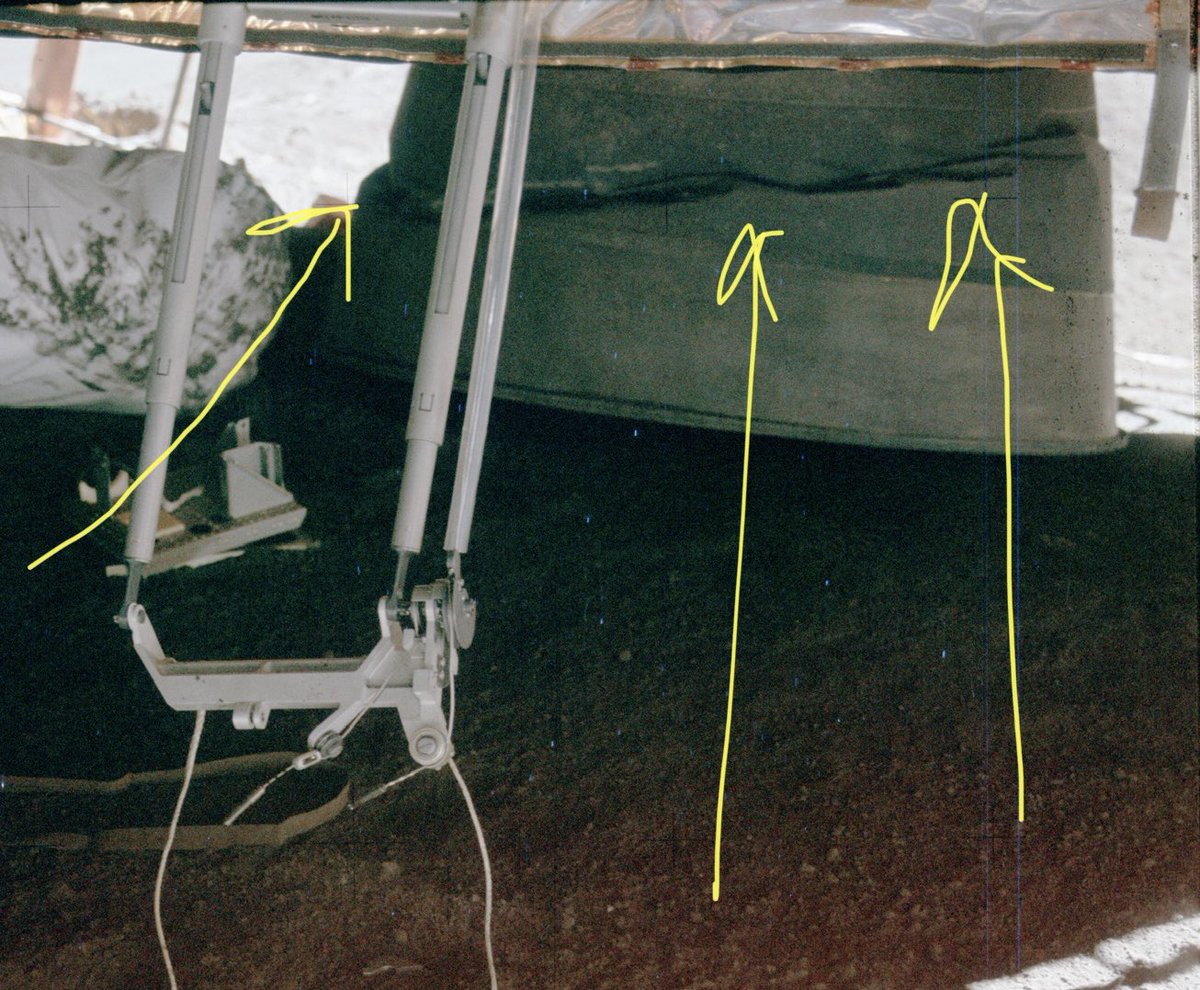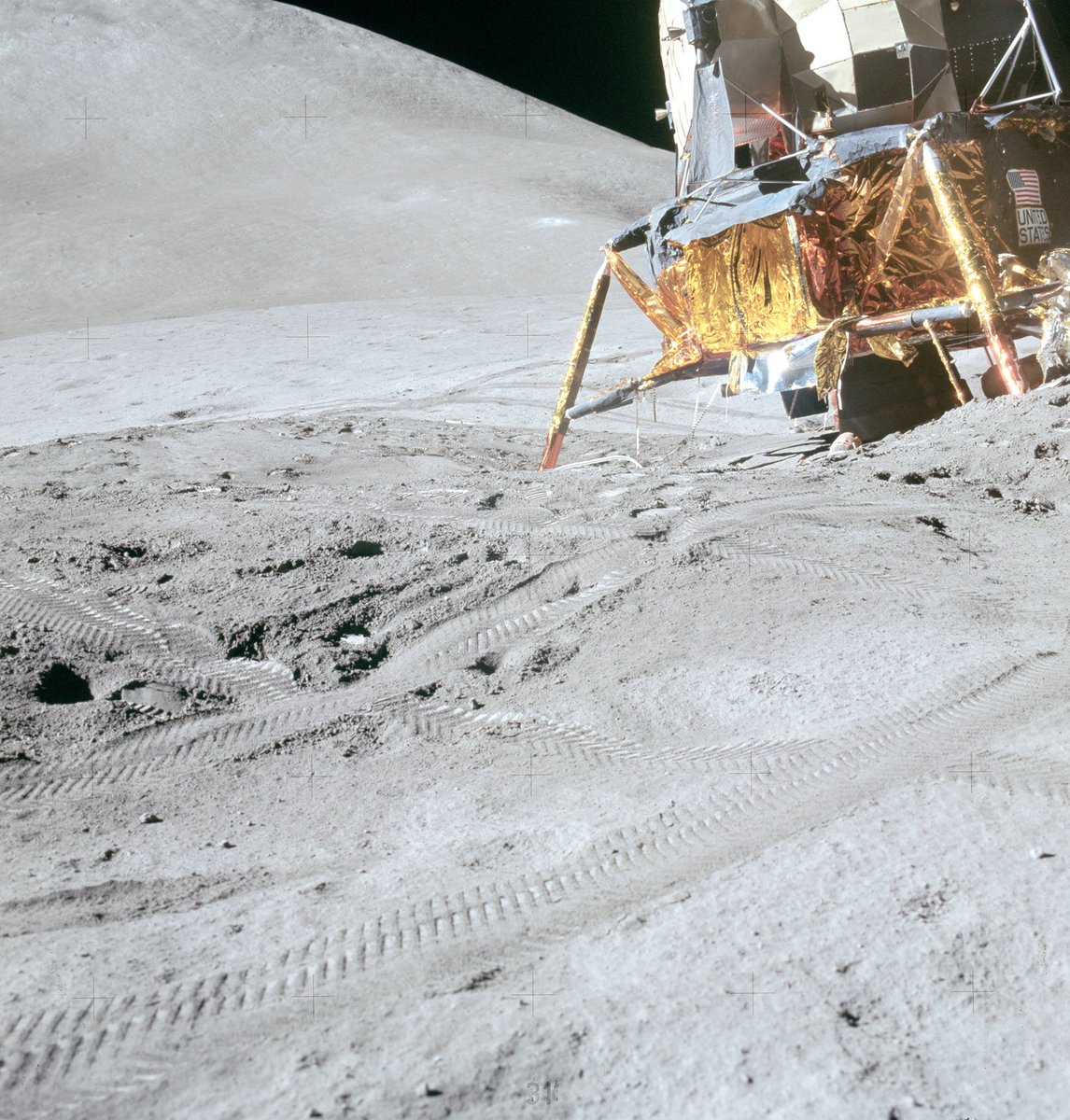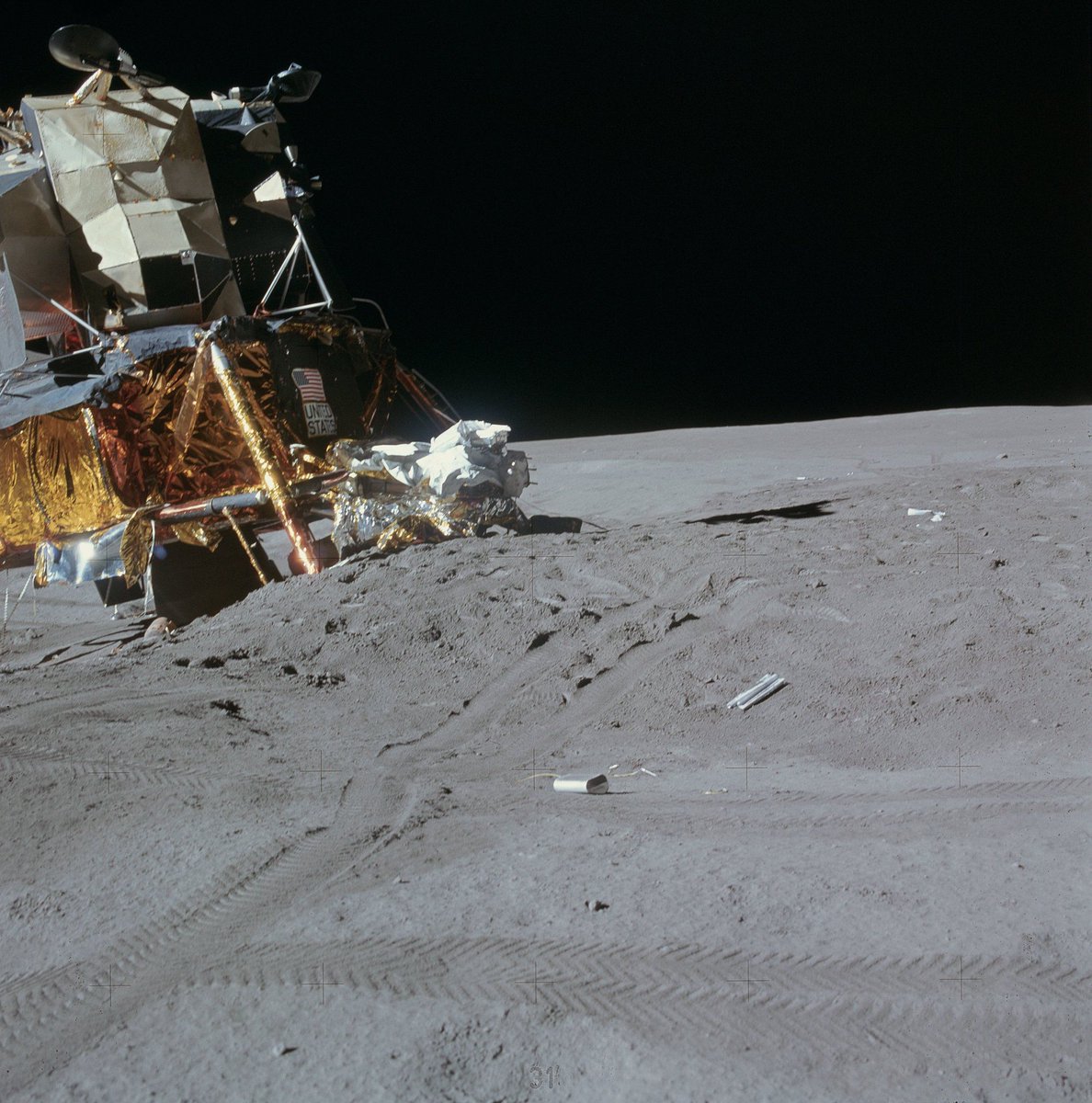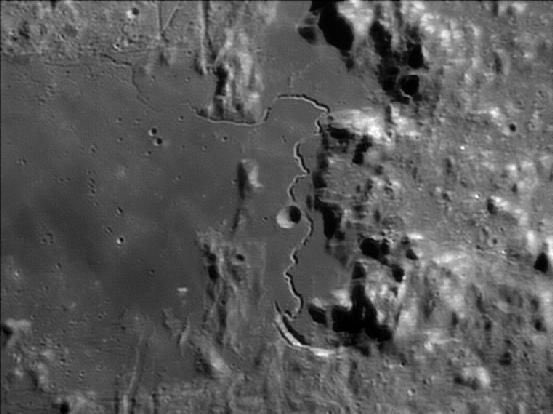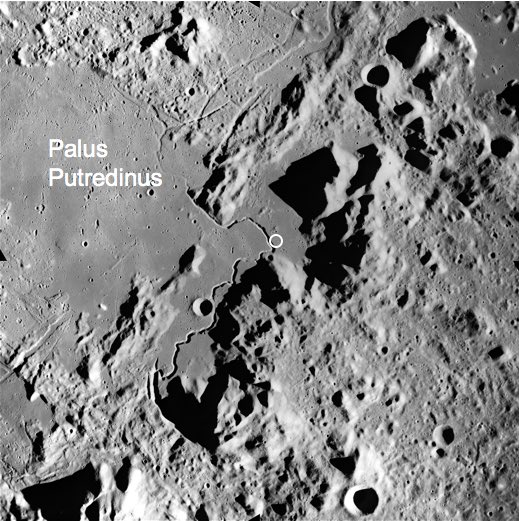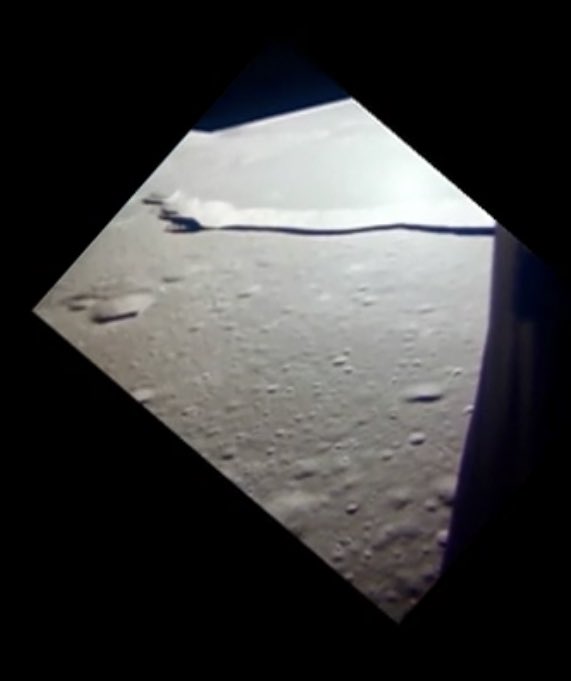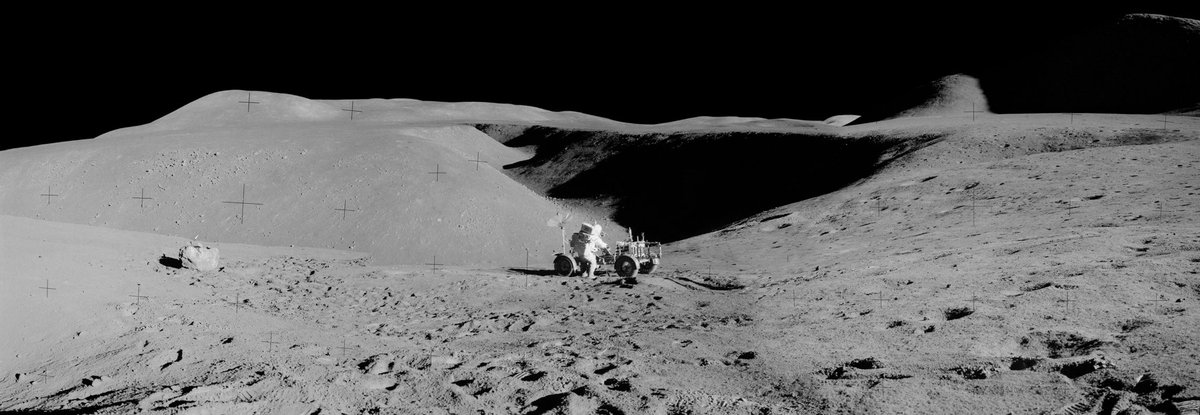A few things to notice, to enhance your viewing pleasure. 1) Look for the white streaks af blowing dust from the bottom of the screen toward the end. Believe it or not, that dust is dark charcoal gray, although it looks white! /1 https://twitter.com/forallmoonkind/status/1288530880911286272
That is because dust has huge amounts of surface area so it reflects a lot of sunlight making it seem bright.
2) Notice how soft and fluffy the blowing dust looks. Soothing, right? In reality, it is super abrasive and is traveling 3.1 kilometers per second!
2) Notice how soft and fluffy the blowing dust looks. Soothing, right? In reality, it is super abrasive and is traveling 3.1 kilometers per second!
Yep, that’s how fast the dust goes. At that speed, it will complete a marathon (26.2 miles) in less than 14 seconds. And there is no air on the Moon to slow it down, so it actually *will* complete a marathon in less than 14 seconds. Over the next hour it will do 265 marathons.
Look for the shadow of the Lunar Module’s rear landing gear footpad. It will appear near the top at 2:44 (?) and move down. See if you can spot the shadow of the Soil Contact Probe. These probes are how they could tell they were almost at the ground, despite the opaque dust.
4) You can actually see TWO shadows of the same footpad. (This is easier to see as the video is moving.) See if you can see them both. Can you guess why there are two? What are all the things we can learn about the blowing dust from this? Brainstorm a little! 

5) You can also see *two* shadows of the same soil contact probe. Can you find them both? And they are at different angles from each other, even though the direction to the sun is the same for both shadows. Can you guess why? 

6) Notice ther is a short pause in the blowing dust just before the final blast of dust at touchdown. Any guesses why this happens? This is a bonus question, because nobody actually knows why it happens. I have my own guess, but I’m not telling. 



7) Then see if you can find the giant blast of dust right at the end, right when they landed, and notice how all the shadows suddenly rotate at that moment. This is really cool. Here is what happened at that moment...
The shadow rotated back 8 degrees at that moment. That’s because they couldn’t see through the dust, and they didn’t realize they were landing on the slope of a broad crater. So they rocked backwards into the crater. Watch it happen. So cool!
They actually rocked back 11 to 12 degrees (78 degrees in this picture is 90 degrees for straight up minus the ~12 degree tilt), which is kind of a big deal because that was right at the design limit. (Though nobody in NASA remembers why that was a real limit.)
8) Next thing to look for in the video — I already mentioned it — the giant blast of dust right after the crew calls out “Contact!”. Why does such a big blast happen? This is super interesting...
9) By the way, when they call out “Contact!”, that meant at least one of the soil contact probes has touched the ground. Then the blast happens. You might think it is because the soil contact probe has gouged and broken up the ground do it blows away. That is not wrong, but...
10) ...it isn’t enough to explain such a giant blast. See how the contact probe gets bent up beneath the footpad? And see the gouge it made in the soil? It does gouge the soil. But the dust blast is too big and goes in *all* directions, not just from the direction of the gouge.
Because they landed right on the rim of the crater, the highest point of ground was directly under the engine nozzle. The nozzle might have actually hit the ground! Or it got close enough to “choke” the rocket exhaust and build up pressure. Either way, the nozzle crumpled! See:
See:
 See:
See:
A force that is big enough to crush a rocket nozzle is also big enough to blow out a big blast of soil at the same time. It is Newton’s Third Law. For every action there is an equal and opposite reaction. Crumple nozzle = Blow out big chunk of soil.
So that’s pretty cool. As you watch the video, see if you can detect the exact moment that the engine nozzle got crushe by the force. Fun fact: the nozzle was longer on the missions that carried Lunar Rovers, to give the lander more thrust to carry the extra weight.
11) Listen for the crew to say “Bam!” near the end. We think that is when the rear footpad made contact with the ground after they rocked back. It is kind of delayed in this video, but that may be a feature of the processing not perfectly synchronizing the audio. (I’m not sure.)
12) Finally, I saved the best for last. At the very beginning of the video, look for Hadley Rille. It is a long, sinuous channel that formed ages ago in the Moon’s geologic history. The view is SO COOL at this angle flying in. Here is a top-view image.

 Read on Twitter
Read on Twitter